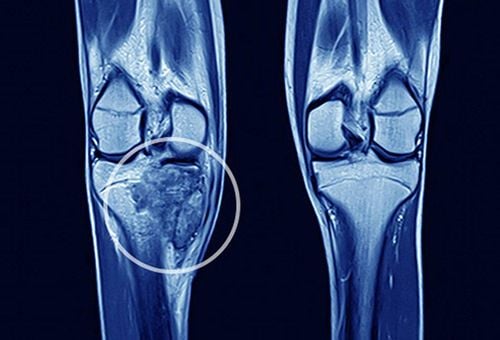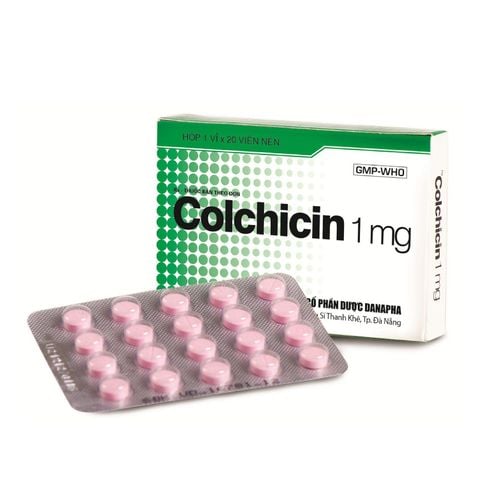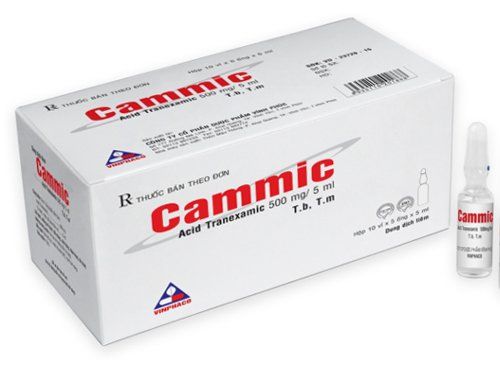This is an automatically translated article.
The article is professionally consulted by MSc, BS. Dang Manh Cuong - Doctor of Radiology - Department of Diagnostic Imaging - Vinmec Central Park International General Hospital.Cerebral venous system diseases such as cerebral venous infarction, venous sinus thrombosis, cerebral venous stenosis,... can threaten the patient's life. Digital erasure scan (DSA scan) and pathological intervention of cerebral venous system are effective, less invasive treatment methods, helping patients recover soon.
1. What is the digital scan to erase the background and intervene in diseases of the cerebral venous system?
Venous sinusitis or venous stenosis can lead to venous infarction or cause stasis, which increases chronic intracranial pressure. The effective treatment for these diseases is endovascular intervention by inserting a microcatheter into the blocked venous sinus, then injecting drugs to dissolve thrombosis or dilating the blocked site, placing a bracket. , treatment of venous sinus stenosis. Since then, the normal circulation flow can be restored, helping to treat effectively, avoiding the risk of widespread venous infarction or the risk of chronic raised intracranial pressure.Endovascular intervention was performed under the guidance of digital subtraction angiography (DSA). This is a technique that uses fluorescent light and X-rays, and takes angiograms before and after contrast is injected. Then, the computer will perform background image blurring, including radiation-blocking structures such as bones, to help clarify the vascular system for more favorable endovascular intervention.

Điều trị tăng áp lực nội sọ bằng phương pháp can thiệp nội mạch
2. Indications and contraindications
2.1 Designation
Venous cerebral infarction due to acute venous sinus obstruction, unresponsive to medical treatment; Cerebral venous stenosis with symptoms or complications; Acute venous sinus thrombosis causes infarction, with contraindications to medical treatment of Heparin.2.2 Contraindications
Relatively contraindicated in cases of renal failure, pregnant women or allergic to contrast agents.3. Prepare to perform
Personnel: Specialist doctors, assistant doctors, nurses, radiology technicians and anesthesiologists; Drugs: Local anesthetics, general anesthetics if there are indications for anesthesia, water-soluble iodine contrast agents, anticoagulants, anticoagulants neutralizers, skin and mucosal antiseptic solutions; Technical means: Digital angiography machine to erase the background; specialized electric pump; film, film printers and image storage systems; aprons, lead suits, X-ray shielding; Common medical supplies: Syringes, syringes for electric pumps, physiological saline or distilled water, gowns, caps, gloves, surgical masks, sterile intervention kits (knives, scissors, forceps) , metal bowls, bean trays, tool trays), cotton, gauze, surgical adhesive tapes, medicine boxes and first-aid tools for contrast-enhancement accidents; Special medical supplies: Needle puncture, microcatheter 1.9 - 3F, micro-conductor 0.010 - 0.014 inch, catheter set 5 - 6F, guide catheter 6F, angiographic catheter 4-5F, wire standard lead 0.035 inch, Y-connector set; Materials that cause embolism: Synthetic plastic beads, bio-foam, bio-glue, metal spirals of all sizes; Patient: A detailed explanation of the procedure by the doctor (the purpose of the procedure, the procedure taking place, the possible complications); fast, drink before 6 hours, can drink less than 50ml of water; in the intervention room, the patient lies on his back, is fitted with a monitor for blood pressure, pulse, breathing, electrocardiogram, SpO2, skin antiseptic, covered with a sterile towel with holes; give sedation to an agitated patient, not lying still; Test sheet: Medical record as prescribed, order of procedure, X-ray film, magnetic resonance, computed tomography if any.4. Perform digital scans to erase the background and intervene in diseases of the cerebral venous system
4.1 Unfeeling
Local or general anesthesia can be performed. If local anesthesia is used, place the patient supine on the DSA table, place an intravenous line, and inject pre-anesthesia. In the case of small children or people who are too excited or scared, general anesthesia should be performed.4.2 Choosing the technique of use and the route of catheterization
Use the Seldinger technique; The catheter entry is usually from the femoral artery. When access through the femoral artery is not possible, another access route is selected.4.3 Diagnostic angiography
Disinfect, numb the puncture site; Needle puncture and catheterization performed; Selective internal carotid angiography: Follow instructions; Selective external carotid angiography: Follow instructions; Selective Vertebral Angiography: Follow instructions.
Chụp số hóa xóa nền và can thiệp các bệnh lý hệ tĩnh mạch não đem lại hiệu quả cao
4.4 Endovascular intervention
Insert the tube into the 6F lumen by the femoral or jugular vein; Insert a 6F catheter into the internal jugular vein; Thrombolytic therapy or venous sinus thrombosis: Microcatheterize to thrombus clot, inject thrombolytic agent tPA, can be combined with balloon dilatation to improve flow, increase blood contact area block with thrombolytics or possibly use an instrument to pull out the thrombus; Treatment of venous sinus stenosis: Insert the manometer to determine the degree of pressure gradient in the anterior, intra, and posterior segments of the stenosis. Then, using a narrow-section balloon, place the bracket over the narrow section and measure the differential pressure again after placing the bracket. The procedure is successful when:The lumen is completely or incompletely recanalized with an allowable level of no more than 30%; The vessels before, during, and after the revascularization had normal circulation, without dissection or thrombosis.
5. Complications and how to handle them
Cerebral bleeding: Due to complications of thrombolytic drugs or due to cerebral hyperperfusion syndrome. For treatment, if brain bleeding has no symptoms, continue monitoring. If there is a large, life-threatening hematoma, surgical drainage of the hematoma is required; Vasospasm: Treat with selective arterial vasodilators; Vascular dissection: Use anticoagulant according to standard regimen; Cerebral infarction due to thrombus migration: If the thrombus is small and moves into the distal branch, it is treated by using arterial thrombolytic drugs; Fracture, migration of interventional instruments: Should be handled by using specialized tools to remove foreign bodies; Inguinal hematoma: Need to apply pressure on the puncture site carefully, immobilize the leg for at least 8 hours or use a vascular closure device. Digital imaging to erase the background and intervene in diseases of the cerebral venous system is a modern, effective treatment with few complications and a short hospital stay. When performing the procedure, patients need to absolutely follow the doctor's instructions to ensure effective treatment and reduce the risk of complications.Vinmec International General Hospital has applied digital imaging technology to erase the background in examination and diagnosis of many diseases. Accordingly, the digital background removal technique at Vinmec is carried out methodically and in accordance with the process standards by a team of highly qualified medical professionals and modern machinery, thus giving accurate results, contributing to plays an important role in determining the disease and the stage of the disease.
Before taking a job at Vinmec Central Park International Hospital from December 2017, Doctor Dang Manh Cuong has over 18 years of experience in the field of ultrasound - diagnostic imaging in Transport Hospitals. Hai Phong, MRI Department of Nguyen Tri Phuong Hospital and Diagnostic Imaging Department of Becamex International Hospital.
If you have a need for medical examination by modern and highly effective methods at Vinmec, please register here.
MORE
What is bone tumor? Types of benign tumors in bone Application of digital erasure angiography (DSA) in the field of neurology Digital angiography and embolization for treatment of uterine fibroids














